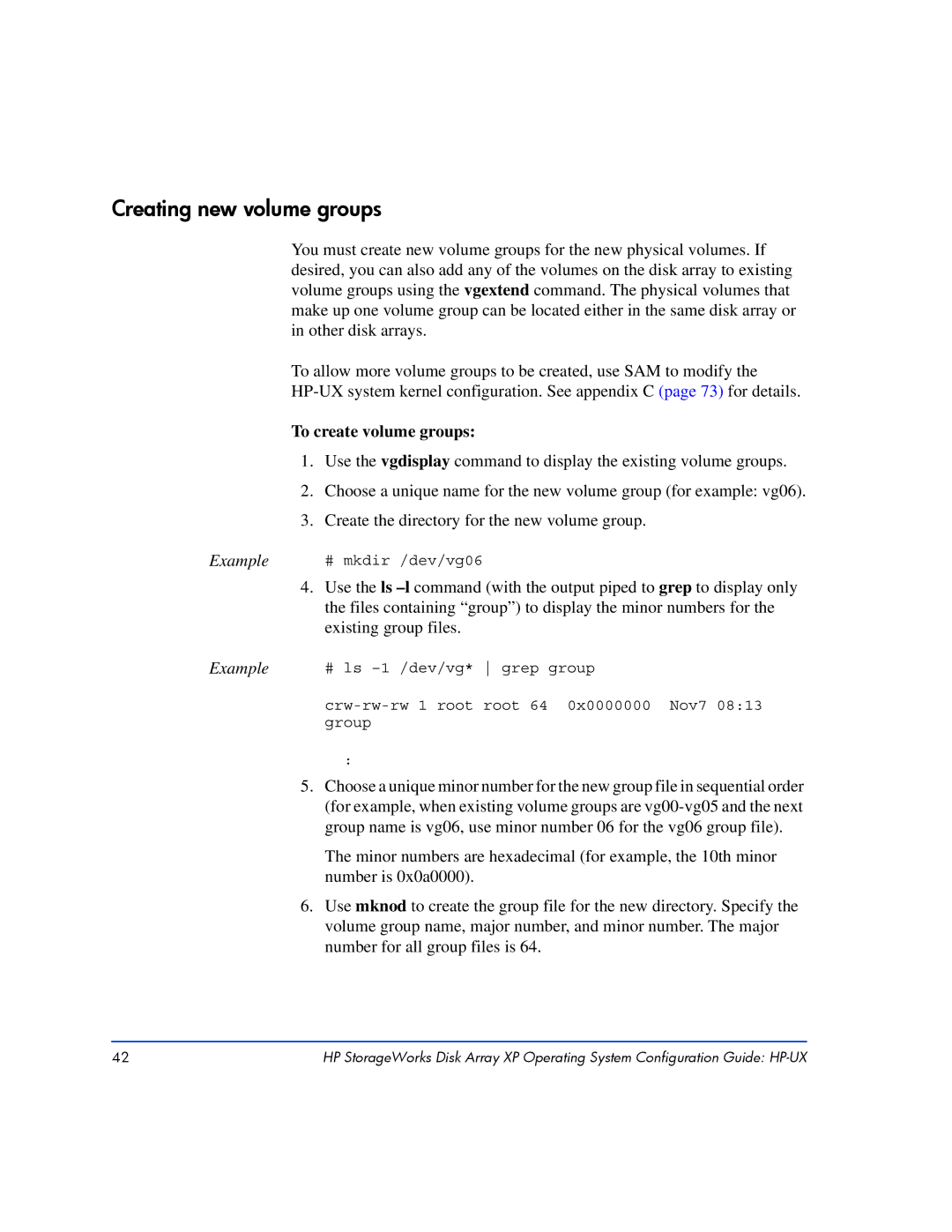Creating new volume groups
You must create new volume groups for the new physical volumes. If desired, you can also add any of the volumes on the disk array to existing volume groups using the vgextend command. The physical volumes that make up one volume group can be located either in the same disk array or in other disk arrays.
To allow more volume groups to be created, use SAM to modify the
To create volume groups:
1.Use the vgdisplay command to display the existing volume groups.
2.Choose a unique name for the new volume group (for example: vg06).
3.Create the directory for the new volume group.
Example # mkdir /dev/vg06
4.Use the ls
Example # ls
:
5.Choose a unique minor number for the new group file in sequential order (for example, when existing volume groups are
The minor numbers are hexadecimal (for example, the 10th minor number is 0x0a0000).
6.Use mknod to create the group file for the new directory. Specify the volume group name, major number, and minor number. The major number for all group files is 64.
42 | HP StorageWorks Disk Array XP Operating System Configuration Guide: |
